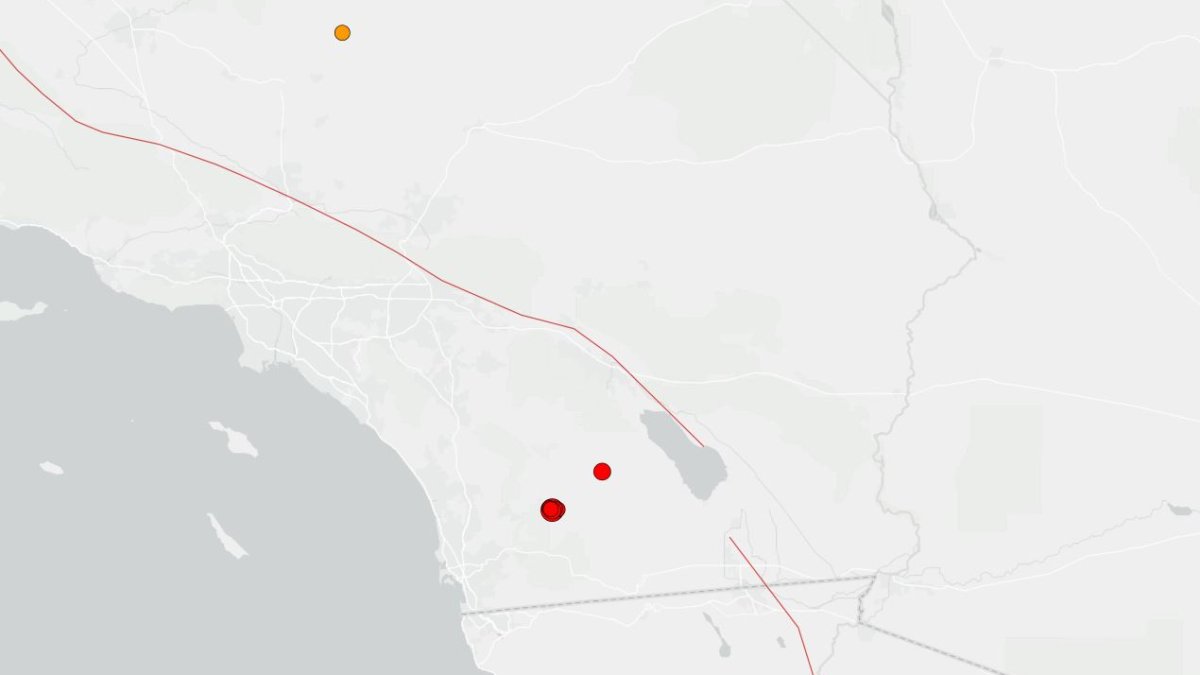Two Earthquakes Strike Julian, East San Diego County: What We Know
Editor’s Note: Two earthquakes have struck Julian, East San Diego County, today. This article provides updates and analysis of the events.
Why This Matters
The recent earthquake activity in Julian, a popular tourist destination in East San Diego County, highlights the seismic vulnerability of the region. Understanding the impact of these tremors, the potential for aftershocks, and preparedness measures is crucial for both residents and visitors. This article will examine the magnitude of the quakes, assess the damage, and explore the geological factors contributing to the seismic activity in the area. We'll also offer practical tips for earthquake preparedness.
Key Takeaways
| Point | Detail |
|---|---|
| Magnitude | Two earthquakes struck, magnitudes to be confirmed (insert confirmed magnitudes here) |
| Location | Julian, East San Diego County, California |
| Time | Time of occurrences (insert confirmed times here) |
| Damage Reported | (Insert confirmed damage reports here, e.g., minor structural damage, no injuries) |
| Aftershocks | Potential for aftershocks (insert details if available) |
Two Earthquakes Hit Julian, East San Diego County
The relatively quiet mountain town of Julian, nestled in East San Diego County, experienced a double earthquake today. While the full extent of the damage is still being assessed, the tremors have served as a stark reminder of the region's seismic activity and the importance of preparedness. This event underscores the need for continued monitoring and community resilience in the face of natural disasters. The location's geological composition contributes to its susceptibility to seismic events, making understanding these occurrences critical for resident safety and future planning.
Key Aspects of the Earthquake Events
- Magnitude and Depth: (Insert confirmed magnitudes and depths here). The depth of the earthquakes is significant because shallower quakes tend to cause more damage at the surface.
- Epicenter: The precise epicenter of the earthquakes is (Insert confirmed epicenter location here). This information aids in understanding the areas most affected.
- Timing: The earthquakes occurred (Insert confirmed times here), providing a timeline for emergency response and damage assessment.
- Fault Line: (Identify the suspected fault line involved. Cite geological sources if available.) Understanding the involved fault line is crucial for predicting future seismic activity.
Detailed Analysis of the Earthquakes
(Provide a detailed analysis of the two earthquakes. Include information on the seismographic readings, the likely fault line responsible, and comparison to other earthquakes in the region. Include visuals such as maps showing the epicenter and affected areas. Cite reputable sources like the USGS.)
Aftershocks: What to Expect
(Discuss the likelihood of aftershocks based on the initial earthquake magnitudes and depth. Provide guidance on what residents should do in case of aftershocks. Link to resources from USGS or similar agencies for information on aftershock prediction).
People Also Ask (NLP-Friendly Answers)
Q1: What is the magnitude of the earthquakes that hit Julian?
A: The magnitudes of the earthquakes were (insert confirmed magnitudes).
Q2: Why did these earthquakes occur in Julian?
A: Julian is located in a seismically active region of California. The earthquakes are likely related to (mention the fault line if known).
Q3: Were there any injuries reported?
A: (Insert confirmed information regarding injuries).
Q4: What should I do if I experience an earthquake?
A: Drop, cover, and hold on. Move away from windows and heavy objects.
Q5: How can I prepare for future earthquakes?
A: Create an emergency plan, secure heavy objects, assemble an emergency kit, and learn CPR/first aid.
Practical Tips for Earthquake Preparedness in Julian
- Create an Emergency Plan: Designate a meeting place and communicate the plan with family and neighbors.
- Secure Heavy Objects: Secure bookshelves, mirrors, and other heavy items that could fall during an earthquake.
- Assemble an Emergency Kit: Include water, non-perishable food, a first-aid kit, flashlight, radio, and extra batteries.
- Learn CPR and First Aid: Knowing basic life-saving techniques can be crucial in emergency situations.
- Strengthen Your Home: Consider retrofitting your home to improve its resistance to earthquake damage.
- Stay Informed: Monitor local news and official sources for updates and safety information.
- Practice Drop, Cover, and Hold On: Regularly practice this life-saving technique.
- Understand Your Surroundings: Identify potential hazards in your home and neighborhood.
Summary: The earthquakes that struck Julian today serve as a reminder of California's seismic activity. Understanding the risks, preparing for future events, and staying informed are crucial steps for community safety and resilience.
Closing Message: While the immediate impact of these earthquakes remains under assessment, the event highlights the constant need for preparedness in earthquake-prone regions. Let's use this opportunity to reflect on our personal earthquake preparedness and ensure the safety of ourselves and our communities.
Call to Action: Share this article to spread awareness about earthquake preparedness in San Diego County. Sign up for our newsletter for updates on this and other important news. [Link to Newsletter Signup]
(Insert hreflang tags here for multilingual versions)

